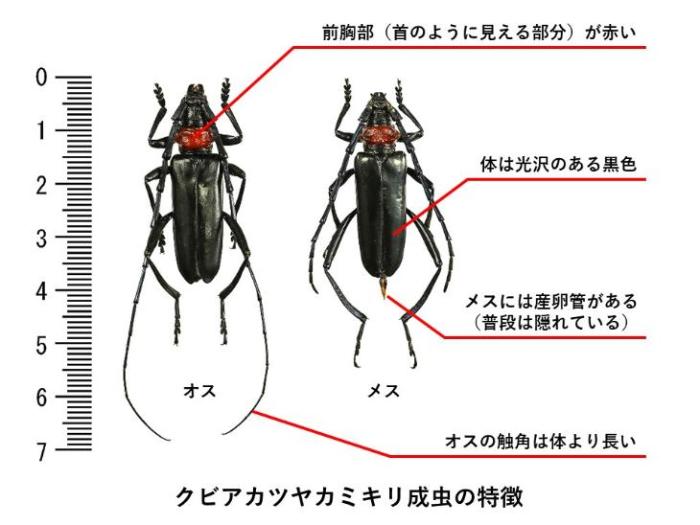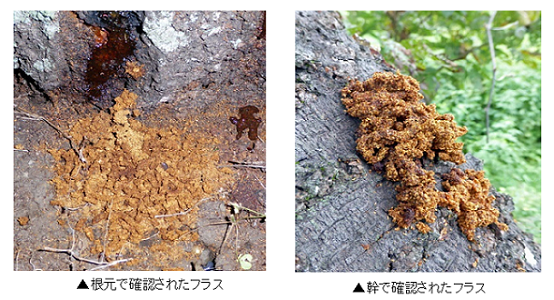Last updated: September 22, 2021
Damage caused by the specified invasive species, the red-necked long-horned beetle, is spreading across the country, and damage has also occurred in neighboring cities. Please cooperate in preventing the damage from spreading.
The red-necked longhorn beetle is an invasive insect that parasitizes trees of the Rosaceae family, such as cherry, plum, and peach, and its larvae eat away at the inside of the tree.
If the damage progresses, trees will wither and die, which will have a serious impact on tourism and agriculture, and secondary damage from fallen trees is also predicted.

The larvae feed inside the tree from April to October, spend two to three years excreting large amounts of minced frass (a mixture of larval droppings and wood chips), and emerge as adults from May to August. Appears outside the tree.
Adults are approximately 2.5 to 4 cm long, shiny black overall, and characterized by a red thorax (neck).

This species of frass has a lot of wood chips, and is characterized by the fact that they are often connected in a rod-like or karin-like shape immediately after being discharged.
The frass is proportional to the body size of the larva, and can vary in thickness from 1 mm to around 5 mm.
If you find one, please cooperate in exterminating it by crushing it on the spot to prevent the damage from spreading, and also provide information to the Environmental Conservation Section of the Living Environment Division or the Environmental Policy Section of the Environment Division.
The black-necked longhorn beetle was designated as a specified alien species on January 15, 2018, so it is prohibited to keep it or transport it alive.
Inagi City Urban Environment Development Department Living Environment Division Phone: 042-378-2111